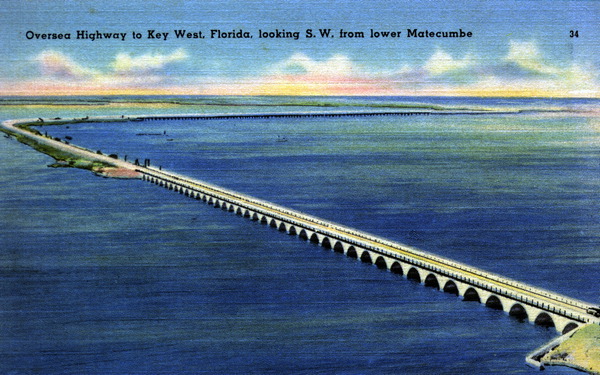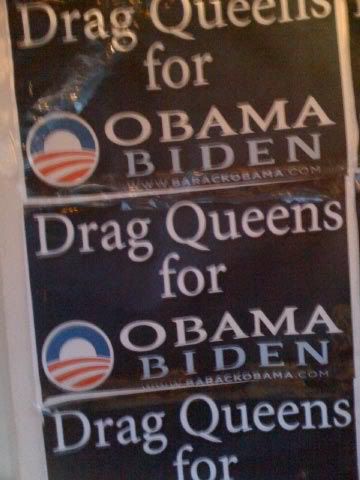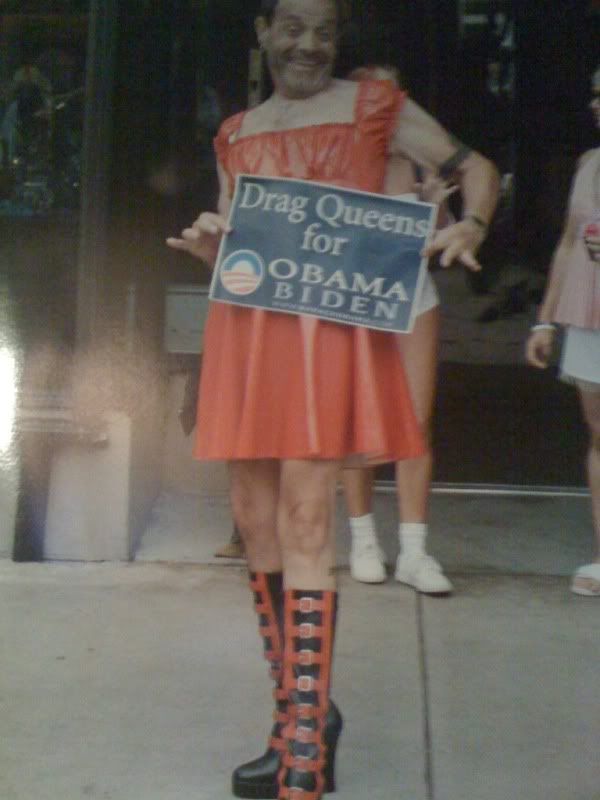Skip to comments.
FIRST THROUGH TRAIN ARRIVED AT 10.43 A.M. (Key West) 100 Years Ago Today
Key West Citizen and Bait Wrapper ^
| January 22, 2012
Posted on 01/22/2012 4:25:06 AM PST by Elle Bee
click here to read article
Navigation: use the links below to view more comments.
first 1-20, 21-24 next last
This is what the other partner in Standard Oil did with some of his money before we were pressed into income taxes
.
1
posted on
01/22/2012 4:25:21 AM PST
by
Elle Bee
To: Elle Bee
ABOUT THE OVERSEAS RAILROAD The dream of one man changed the isolation of the Florida Keys for all time. Native New Yorker Henry Flagler, born in 1830 and educated only to the 8th grade, established the Standard Oil Company with John D. Rockefeller in 1870 and became a wealthy, well-respected businessman. In 1885 he purchased a short-line railroad between Jacksonville and St. Augustine and began extending the rails southward toward Miami, then only a small settlement.
 Henry M. Flagler
Henry M. Flagler
Flagler's vision of his railroad project went beyond Miami, however. He wanted to connect the mainland with the deep port of Key West, a booming city of more than 10,000 people, in anticipation of the growing shipping commerce he thought would be generated by the opening of the Panama Canal in the early years of the 20th century. He may even have set his sights on eventually connecting Key West with Cuba.
The railroad extended to Homestead, at the gateway to the Keys, by 1904. The year 1905 saw the commencement of what many perceived as an old man's folly: a railroad constructed across 128 miles of rock islands and open water, under the most non-idyllic conditions imaginable, by men and materials that had to be imported from all over the world. Steamships brought fabricated steel from Pennsylvania; cement from Germany and Belgium for use as concrete supports below the water line; cement from New York state for above-water concrete; sand and gravel from the Chesapeake; crushed rock from the Hudson Valley; timbers and pilings from Florida and Georgia; and provisions from Chicago. Barges carried fresh water from Miami to the construction sites. Nothing was indigenous to the Keys except the mosquitoes and the sand flies.
 Chief Engineer William Krome
Chief Engineer William Krome
By 1908 the first segment, from Homestead to Marathon, was completed, and Marathon became a boom-town. Ships brought their cargoes of Cuban pineapples and limes here, where they were loaded onto railway cars and sent north. (The railroad turnaround was at the present site of Knight's Key campground.) Railroad workers used Pigeon Key (see our Attractions chapter) as a base for further railway construction.
The 7-mile "water gap" between Marathon and Bahia Honda took some engineering prowess to overcome, and the completion of the project was severely hampered by several devastating hurricanes in 1909 and 1910. But on January 22, 1912, Henry Flagler, by then age 82, finally rode his dream from Homestead to Key West, across 42 stretches of sea, over 17 miles of concrete viaducts and concrete-and-steel bridges, over 20 miles of filled causeways and ultimately traversing 128 miles from island to island to the fruition of his vision. He entered Key West that day a hero. He died the following year probably never knowing that his flight of fancy changed the course of the Florida Keys forever.

Flagler in Key West
Flagler's railroad, called the Key West Extension, made Key West America's largest deepwater port on the Atlantic Coast south of Norfolk, Virginia. Trade with the Caribbean increased, and Key West flourished for 23 years, recovering from the loss of the sponge and cigar industries.
The railroad stop on Key Largo was called Tavernier and developed into a trading center for the Upper Keys. Pineapple farming faltered in Key Largo and Plantation Key from a combination of tapping out the nourishment in the thin soil and market competition from the shiploads of Cuban pineapples transported by railway car from the docks of Key West to the mainland. The railroad company built a fishing camp on Long Key that attracted sportfishing aficionados from all over, including camp regular, writer Zane Grey. Real estate boomed for a time, as people came to the Keys to homestead. The Florida East Coast Railroad Company completed construction of Key West's first official tourist hotel, the Casa Marina, in 1921. La Concha was built in 1928.
In 1923 Monroe County appropriated funds to construct a road paralleling the railroad. The bumpy rock road crossed Card Sound with a long area of fill and a wooden bridge. Half a dozen humpback bridges crossed the creeks and cuts on Key Largo. Extending the length of Key Largo, the road continued over Plantation Key, Windley Key and Upper Matecumbe. At the southern end of our island chain, a 32-mile narrow road connected Key West with No Name Key off Big Pine Key. A car ferry service provided the waterway link between the two sections of roadway, which traversed what we now call the Upper and Lower Keys.

Still, the journey across this 128-mile stretch from Homestead to Key West proved a rugged, dusty, insect-ridden, costly, all-day affair, and tourism did not flourish as hoped and expected. Fresh water remained a coveted, scarce resource in the Florida Keys. Cisterns saved the funneled rainwater, which was parsimoniously meted out. Salt water was used whenever possible, and wash days were also always bath days. Hardly a tourist mecca, this.
The Great Depression delivered a near-fatal blow to the Florida Keys with a one-two punch. The cigar industry had moved to Tampa, sponging went to Tarpon Springs and lighthouses had put an end to wrecking long before. The population of Key West dropped from 22,000 to 12,000. By 1934, 80 percent of the city's residents relied on government assistance. The Federal Emergency Relief Administration stepped in and commenced development and promotion of Key West as a magnet for increased tourism in the Keys.
To that end, developers began building bridges to connect the watery cavities between the Middle Keys to each other and to the two sections of finished roadway. A "bonus army" of World War I veterans was employed to accomplish this momentous task. However, in 1935 Mother Nature reasserted her authority and once again charted the destiny of our islands. On Labor Day, what today we would call a Category Five hurricane hit the Upper and Middle Keys, destroying much of Flagler's Railroad. Hundreds of lives were lost when the 17-foot storm surge hit the bridge-building crew working on a bridge at Islamorada.

Because of mismanagement and lack of foreign freight heading northward from Cuban and Caribbean ports, the railroad was already in receivership. The railroad chose not to rebuild, citing financial difficulties. It had by this time become cheaper to haul cargo by truck than by train. Ironically Henry Flagler’s own Standard Oil pressed the railroad into bankruptcy because of unpaid fuel bills. The county's Overseas Road and Toll Commission purchased the right of way from the Florida East Coast Railroad and converted the single track railway trestles, which remained intact after the hurricane, into two-lane bridges for automobiles. The highway from Homestead to Key West opened for traffic in 1938.

.
2
posted on
01/22/2012 4:34:45 AM PST
by
Elle Bee
To: JulieRNR21; kinganamort; katherineisgreat; floriduh voter; summer; Goldwater Girl; windchime; ...
Interesting bit of Florida history.
What a difference a century makes...

Florida Freeper

3
posted on
01/22/2012 5:00:19 AM PST
by
Joe Brower
(Sheep have three speeds: "graze", "stampede" and "cower".)
To: Elle Bee
Then there's the anti-trust laws....because these folks tended to crush their competition by not so nice methods.
I have little respect for them.
To: Elle Bee
Thanks for the post. My mother was born in Key West, 1918, and graduated from Key West High in 1935. A true conch. My grandfather was the chief engineer of the USS Florida which sailed between Key West and Cuba back in the day. His name was Guilreymo Russell and we had relatives named Curry. Both names are very much associated with Key West. The ship eventually moved to Miami and that is where I was born back in 1943.
My mother lost several members of her family who had traveled up to Tavernier for the Labor Day weekend in 1935. The hurricane that struck there is still on record as one of the most powerful Cat.5 'canes ever to strike the U.S. and recorded the lowest barometric pressure that stands still to this day.
5
posted on
01/22/2012 5:03:55 AM PST
by
mc5cents
To: Elle Bee
Great thread Elle!I'm not a conch but have been here sine 1970.My daughter was born here(Homestead-- still counts)and now lives in Key West where her husband has helped create this:
jet-lev.com An amazing way to "fly" across the water.
We still fish for tarpon near the old train abutments off Channel II. Sorry to see the railroad go the way it did.
6
posted on
01/22/2012 5:26:22 AM PST
by
rodguy911
(FreeRepublic:Land of the Free because of the Brave--Sarah Palin 2012)
To: Elle Bee
7
posted on
01/22/2012 5:30:00 AM PST
by
6SJ7
(Meh.)
To: Elle Bee
The Flagler story just proves the point on the high speed rail nonsense if there was even the faintest glimmer of a hope of profit Disney or some other mega corp would have done it years ago. Please note that we still have freight trains running through most of Florida.
8
posted on
01/22/2012 5:36:01 AM PST
by
scottteng
(Tax government employees til they quit and find something useful to do)
To: Elle Bee
Great thread, very interesting and educational, thanks Elle Bee!
9
posted on
01/22/2012 5:44:23 AM PST
by
snippy_about_it
(Looking for our Sam Adams)
To: Elle Bee
Somewhere around 1980, we were cruising the waters in the Keys. We had just passed through the draw on Seven Mile Bridge. When the bridge traffic started to flow again, a piece of equipment being transported by truck (backhoe, I think) struck the propane tank on the bridgetender’s little house causing a spark and explosion. I don’t believe they ever found that poor soul. The bridge was out for quite a while and they had to ferry across, just like the old days.
10
posted on
01/22/2012 6:00:59 AM PST
by
ryderann
To: Elle Bee

isn't that the truth...
11
posted on
01/22/2012 6:27:13 AM PST
by
Chode
(American Hedonist - *DTOM* -ww- NO Pity for the LAZY)
To: mc5cents
i was conceived in Key West during the war.
To: mc5cents
I was born there a year before you.
My mother’s first husband worked on rescue/retrieval after the ‘35 hurricane.
There’s a piece of railroad rail in Marathon with a plaque stating so-n-so was saved hanging on to that rail.
Mother and husband lost all their wealth in the ‘26 hurricane.
At one time they owned the property at Alhambra Circle and LeJeune road in Coral Gables.
It was so far in the sticks they were embarrassed to tell their friends. Sold it for a song.
13
posted on
01/22/2012 10:08:26 AM PST
by
Vinnie
To: Elle Bee
The old 7-mile bridge was built on the old railroad tracks. There was barely room for 2 cars and many side view mirrors met their demise on that bridge. We were in Key West one Memorial day many years ago and our hotel was in Islamorada. We got there on a Thursday and went down to Key West for dinner on Friday and began the drive back to Islamorada around 9 PM. All of the people coming down for Memorial Day were headed South to Key West.
That was one of the scariest drives I have ever experienced. I think there were a lot people that had already had quite a few drinks. The traffic was almost bumper to bumper heading South and people were passing. At one point I thought my chances might be better to just abandon the car and jump into the water. It was a heck of a 7 mile drive.
Now there is a new bridge, the old one is closed and is where they filmed parts of the movie True Lies. The new one sways a little and gives sensitive people a little vertigo, but it’s much wider and high enough at one point for larger boats to go under so no drawbridge needed.
14
posted on
01/22/2012 10:29:31 AM PST
by
mojitojoe
(SCOTUS.... think about that when you decide to sit home and pout because your candidate didn't win)
To: Elle Bee
Among the first passengers to arrive on the Key West train were these guys:

They immediately established a fabulous disco, a fabulous florist shop, a fabulous interior design outfit, and, of course, a fabulous YMCA.
The rest is history. And Key West remains fabulous to this day.
15
posted on
01/22/2012 10:32:21 AM PST
by
southernnorthcarolina
("Better be wise by the misfortunes of others than by your own." -- Aesop)
To: Elle Bee
16
posted on
01/22/2012 10:44:18 AM PST
by
mojitojoe
(SCOTUS.... think about that when you decide to sit home and pout because your candidate didn't win)
To: mojitojoe
if you look closely at the guard rails on the old bridge you will see that they are just that ... the old rails from the railroad track
.
17
posted on
01/22/2012 12:17:32 PM PST
by
Elle Bee
To: southernnorthcarolina


.
18
posted on
01/22/2012 12:22:57 PM PST
by
Elle Bee
To: 6SJ7; snippy_about_it
There was a very good ... not at all PC fluffed ....special on the Flagler and his railroad on the Miami PBS station yesterday ... yes PBS
If it's on again its worth the time
.
19
posted on
01/22/2012 12:32:31 PM PST
by
Elle Bee
To: Elle Bee
Anyone know if sections of the old railway bridges have been preserved?
In the 50’s and 60’s I drove down to Key West a number of times with my family.
I clearly recall several miles of isolated chunks of railroad bridges.
They were like long horizontal concrete sculptures that grew out of the ocean, then suddenly disappeared again.
Cool when you're a kid.
Navigation: use the links below to view more comments.
first 1-20, 21-24 next last
Disclaimer:
Opinions posted on Free Republic are those of the individual
posters and do not necessarily represent the opinion of Free Republic or its
management. All materials posted herein are protected by copyright law and the
exemption for fair use of copyrighted works.
FreeRepublic.com is powered by software copyright 2000-2008 John Robinson
 Henry M. Flagler
Henry M. Flagler Chief Engineer William Krome
Chief Engineer William Krome





 isn't that the truth...
isn't that the truth...


